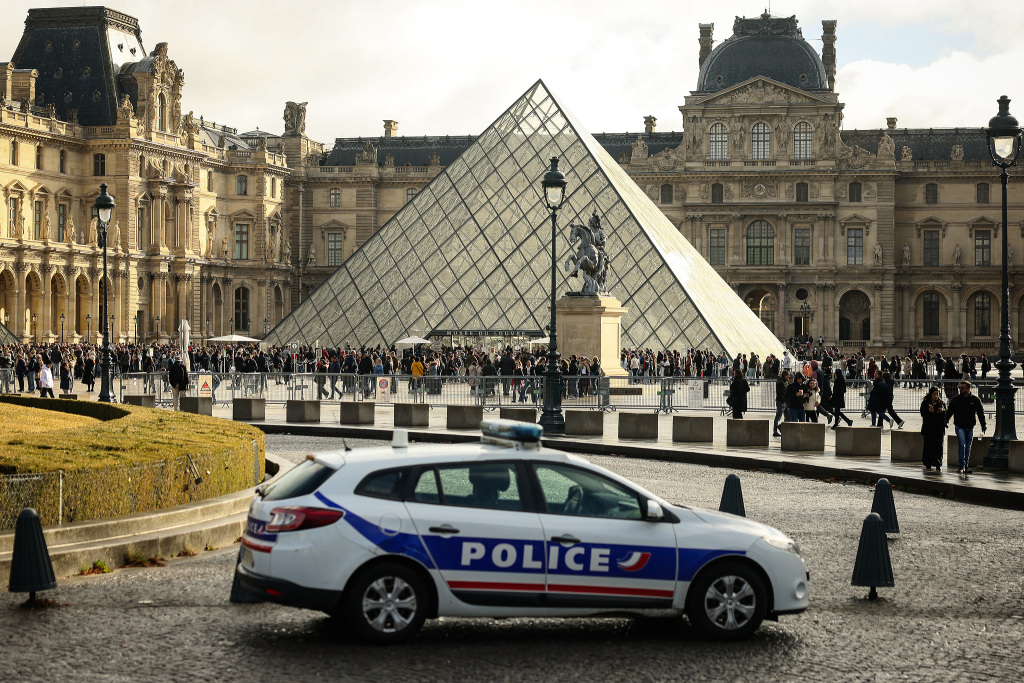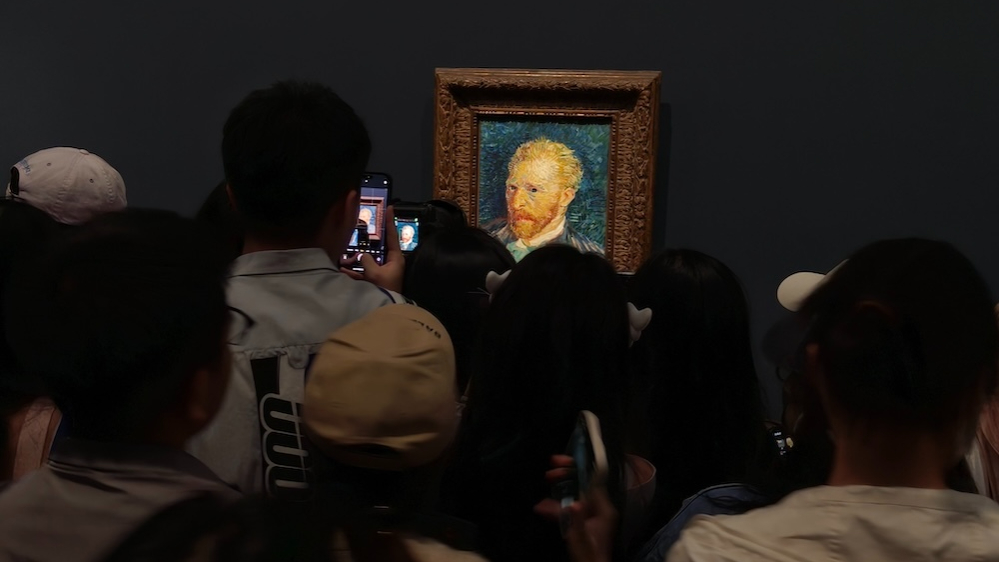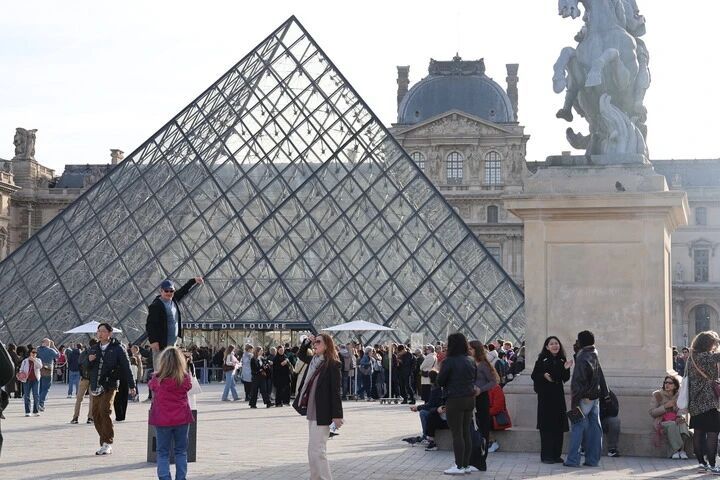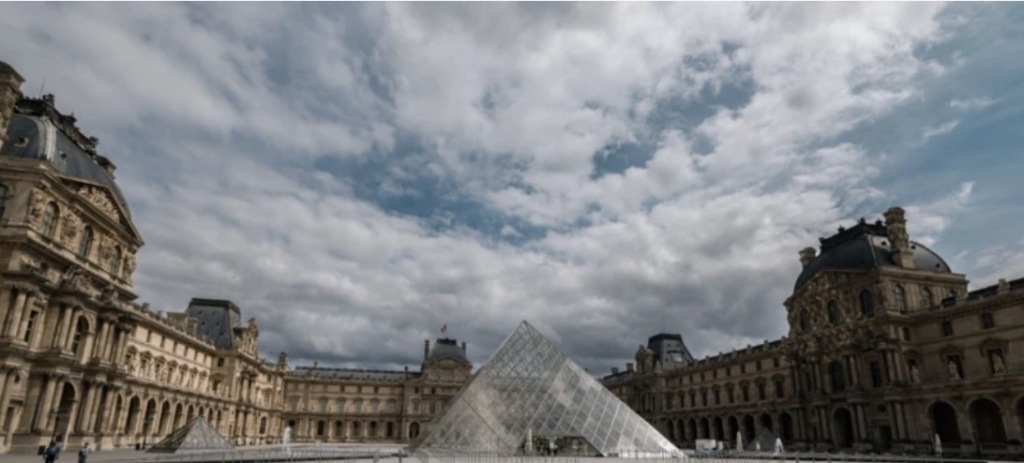
The investigation into the Louvre's devastating theft has taken a decisive turn. The Paper has learned that two suspects from the northern suburbs of Paris were arrested on October 25th. Since the theft, the museum has been transferring some of its most valuable jewels, under police escort, to the main vault of the Bank of France, located 26 meters underground, approximately 300 meters away.

On October 26, 2025, local time, a police car was parked in the courtyard of the Louvre Museum in France. Previously, the Louvre Museum had a crown jewel theft case. Visual China Photo
Two suspects involved in the case have been arrested
According to local French media reports, the Paris Public Prosecutor's Office confirmed on Sunday morning that the suspect involved in the Louvre robbery was arrested on Saturday evening, October 25.
The Paris prosecutor in charge of the investigation, Laure Beccou, said in a statement that one of the men was preparing to leave for Algeria from Paris Charles de Gaulle Airport. The statement did not say whether the lost jewelry had been found, adding that it was "too early to provide any details" that would be detrimental to the investigation.
This is the first major breakthrough in the investigation into the Louvre heist, in which four individuals stole eight pieces of jewellery worth a total of €88 million. Around 100 investigators are being mobilized to hunt down the perpetrators and try to recover the stolen items.
According to multiple French media reports, shortly after the first suspect was arrested at the airport, a second suspect was apprehended in the Seine-Saint-Denis area. Both suspects, aged in their 30s, are from the Seine-Saint-Denis department in the northern suburbs of Paris and have prior criminal records. French media outlets, including Le Figaro, citing police sources, reported that the second suspect had planned to flee to Mali.
Reportedly, there are four suspects involved in the case, but only two have been arrested so far. They are currently being held on charges of "organized theft" and "criminal conspiracy," with further criminal charges pending.
Several French media outlets have learned that, under heavy police guard, the remaining jewels and some valuable artifacts from the Louvre's Apollo Gallery were moved on the 24th to the main vault of the Banque de France, located a few hundred meters from the Louvre. This vault, located 26 meters underground, houses approximately 90% of France's gold reserves and numerous national treasures, including a Leonardo da Vinci manuscript valued at over €600 million.

On October 22, 2025, local time, in Paris, France, the French Senate, Culture, Education, Communications and Sports Committee asked the Louvre Museum Director Laurence de Carr about the Louvre jewelry theft. (Visual China Photo)
“It is too early to reveal further details”
According to The Guardian, prosecutor Laure Beccuau expressed regret over the premature disclosure of the arrests by various media outlets, stating that "this only jeopardizes the work of over 100 investigators to recover the stolen jewelry and apprehend all those responsible." She stated that it was too early to reveal further details, but that she would reveal more information after the suspect's period of detention prior to being charged has concluded. Under French law, those suspected of serious crimes can be detained for up to 96 hours before being charged.
The individuals were identified through forensic analysis of items left at the scene, including gloves, vests, motorcycle helmets, angle grinders and other power tools, blowtorches, and walkie-talkies. More than 150 DNA and fingerprint samples are currently being analyzed.
Security weaknesses were also exposed: the museum's exterior wall surveillance at the site of the incident had a "blind spot" – meaning the camera outside the intrusion window was facing the wrong direction or had insufficient coverage.

Xinhua News Agency photo of the Louvre Museum in France
Around 9:30 a.m. Sunday, four men arrived outside the Louvre in a stolen furniture truck equipped with a telescopic ladder and a lift. Two of them boarded the Apollo Gallery. Wearing high-visibility vests and posing as maintenance workers, they smashed an unlocked window and opened two display cases with a disc cutter. They then descended on the bucket lift and fled on a motorcycle driven by two other men.
The brazen theft lasted less than seven minutes, with the two men who entered the gallery housing France's extant royal jewels spending just three minutes and 58 seconds.
They dropped a diamond and emerald crown during their escape, but took away eight pieces of jewellery inlaid with exquisite gems (a list of stolen collections from the Louvre in France has been released) . Becque said last week that these jewels are "of astonishing value, close to 90 million euros, but insignificant compared to their historical value."
If jewelry is quickly disassembled, the gems separated from the metals, and then transported to the overseas black market, it is extremely difficult to recover. Currently, the investigation is still ongoing to track down the remaining suspects in the Louvre robbery and the criminal network involved. Investigators are trying to determine whether the Louvre robbery is a traditional organized crime, that is, a robbery for profit, or a criminal network specializing in art smuggling.
(This article is partly based on reports from the European Times, Radio and Television Luxembourg (RTL), etc.)


